
Now that I have passed on the baton of management of Academy Newspapers Pvt. Ltd., Publishers of Star of Mysore and Mysooru Mithra, to honour the immortal words of Poet Alfred Lord Tennyson, “The old order changeth yielding place to new, And God fulfills himself in many ways…”, besides the fact that I have to kill a lot of time being unemployed, I decided to walk down the memory lane from 1977 when I came to this wonderful city. — KBG
When I moved to Mysore for good in 1977, staying in Gokulam hillock with my wife and elder son, this city was known as Pensioner’s Paradise. Gokulam hillock area, with a Contour Road, was just developing with unpaved roads and houses far between. There were old people living here suggesting that they were pensioners. In fact, it was so. It was also known as a City of Palaces, Mansions, Gardens and Parks. This was also true.
The old residential layouts had conservancy lanes. Though roads were small, they were well-laid with unpaved footpaths and on either side of major roads huge vacant space was provided keeping in mind the future need for widening the roads. It was also a Green City. There was hardly a road without avenue trees with rich green foliage. Rain trees had huge trunks and massive spread of branches forming a canopy full of shade-giving leaves. There were also Gulmohar trees that would bloom in April-May painting the city red while Jacaranda would brighten the landscape with its yellow flowers that would also carpet the road with withering yellow flowers. Then, there used to be some trees blooming seasonally with unique flowers of violet and other rare colours.
Some of the roads like Valmiki road and the stretch from DC’s residence to the Valmiki road junction (Hunsur Road) would look like a green tunnel when you travel by bus, from that height. A feast for our eyes. Yes, indeed it was a Pensioner’s Paradise. With the population at six lakh, with the only double road called Chamaraja Double Road, the city was free of pollution and quite peaceful. This double road too was lined with huge avenue trees on either side from the Ramaswamy Circle to the Sanskrit College Junction. As for traffic, city buses were of recent introduction and very few. Famous horse-drawn Mysore Jatkas were ubiquitous in good numbers despite the presence of a few autorickshaws. If you wanted a taxi, the booking would be through agents in K.R. Circle or the old private bus stand.
Metropole Hotel was the only iconic hotel where continental cuisine was served, famous for its steaks and good dining. There was a famous Fountain Circle with a popular coffee and snack bar known as Fountain Cafe run by a Kodava gentleman. When the traffic increased at this junction, the then Municipal Commissioner Mr. S.D. Seeyam, a young IAS officer, shifted it to the RTO Circle where you can see it today.
CFTRI was a landmark institution and the City Railway Station had its old world look with an architecture that blended with the City of Palaces.
People who came here from Bombay, Madras or Bangalore used to call Mysore as a village town. The residential layouts with many vacant sites used to be without any sound or pollution; the only busy one used to be the Sayyaji Rao Road — that too from K.R. Circle to the Bata Showroom Junction on Dhanvanthri Road. Beyond that it was deserted with the huge building of the Chamarajendra Technical Institute (CTI), the school of fine arts, sculpture and carpentry on one side and the K.R. Hospital on the other side. The Government Ayurveda College at the Irwin Road Junction was a landmark building.
For politicians, to hold their public meetings, the Town Hall ground used to be the venue, while for the theatre-lovers and for indoor meetings, seminars etc., Town Hall was the only place available in the city. Naturally, Town Hall and its premises used to be always crowded and noisy!
As now, then also the Palace used to be the No. 1 attraction for tourists. The action would always be at the North Gate with the famous Anjaneyaswamy temple and the South Gate with parking for tourist buses. Those days there were only two public statues in standing postures under a canopy of Mysore Maharajas — one of Sri Chamaraja Wadiyar in the North Gate under a gold-coated glowing dome and another of Sri Krishnaraja Wadiyar IV at K.R. Circle Junction. There was no D. Devaraja Urs Road that we see today in this junction. It was under construction with a mud road.
Saraswathipuram was a developing layout and there was no Kuvempunagar that we see today. Kamakshi Hospital was considered too far away from even Saraswathipuram! And that was where Star of Mysore had its Printing Press. When we recruited employees, some would grumble saying our Press was too far away from city making it a reason for asking more salary! Of course, city bus facility was only up to the nearby Saraswathipuram. This was the story of an unfolding slowly growing city.
It was a time when D. Devaraja Urs was the Chief Minister who was at the crossroads of his political career because of Indira Gandhi losing the elections in 1977 and Janata Party coming to power at Delhi. Being the Congress Chief Minister of long-standing, I think eight years, Devaraja Urs seemed to have crossed the path of the mighty, though fallen at that time, Indira Gandhi for whatever reason and paid for it politically never to come back. His protégé R. Gundu Rao, the dark horse in politics, became the Chief Minister in 1980 through the machination of defection. Our city will always remember R. Gundu Rao because he gave us the architecturally beautiful, imposing Kalamandira, a gift to the theatre people and the city. He also gave us the Sports Complex, Chamundi Vihar Stadium.
From 1983, Congress lost its stranglehold in Karnataka politics. Old order changed yielding place to new political leaders from Janata Party like Ramakrishna Hegde, H.D. Deve Gowda and J.H. Patel. Mysore district was declared a backward-district industrially by Devaraja Urs and industrialists were given many concessions to attract them to Mysore district. Even my Press got Rs. 15,000 as seed capital at 4% interest which was paid after a decade, more to get that ‘liability’ entry in the balance sheet removed than to clear the liability for which the Government never made any serious demand!
When I came here, it was a Municipality with a Government-nominated IAS Officer as Commissioner. D. Devaraja Urs did not believe in elections for local bodies — City Municipalities or Town Panchayats. Some years later it became a Corporation. So also the city planning body — City Improvement Trust Board (CITB). Many years later it became Mysore Urban Development Authority (MUDA). But, by 1990, the Pensioner’s Paradise was gradually turning into the Paradise of landsharks, apartment builders and industrialists. MUDA was put to sleep with a purpose by the successive Governments.
Politicians began to form layouts and establish educational institutions including medical and engineering colleges under benami or family Trusts.
It was during the first term of D. Devaraja Urs as CM, Mysore District was declared an industrially backward district. Following this new industries did not come as expected because of poor road and rail connections. It was still narrow-gauge from Bangalore to Mysore and there was no air connectivity.
The only major industry to come up was Vikrant Industries Ltd., promoted by one R.B. Jesudasen. I remember its promoters coming to my brother’s house requesting him to buy some shares. And, I think, he obliged them.
Later when the factory ran into difficulties, the Karnataka Government took it over and now it is with J.K. Tyre, a Public Limited Company.
Hebbal industrial area along with the new ones became the destination for many industries, changing the face and character of the city. The proposed Green Belt for city beyond the radius of 20-km disappeared and in its place came the Ring Road and Private Layouts. And the Pensioner’s Paradise was LOST.
Note: Nostalgically Speaking – 1 on Dr. K.B. Subbaiah was published on July 19. Watch out for Nostalgically Speaking – 3 on Mr. Srikantadatta Narasimharaja Wadiyar next week.—Ed
e-mail: [email protected]



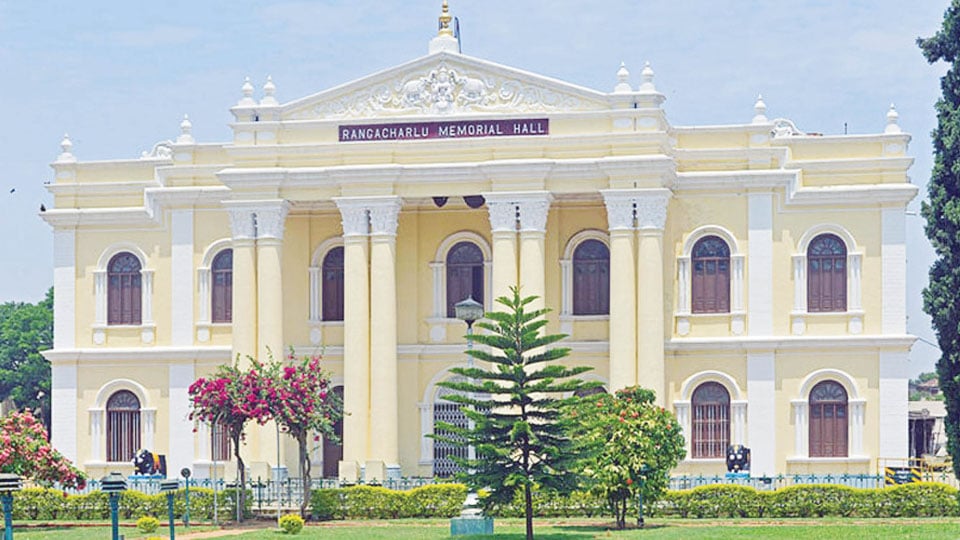
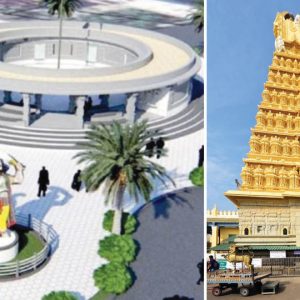
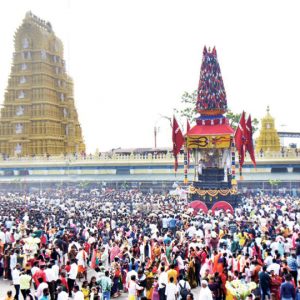
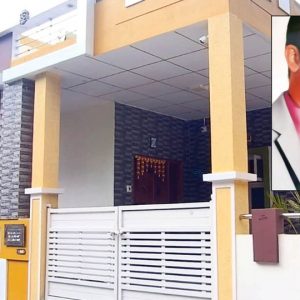
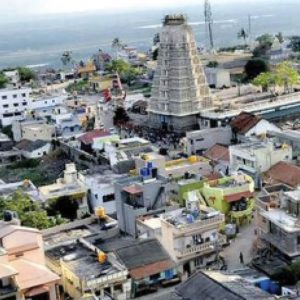
Good article, Ganapathi. The restaurant opposite the fountain in Devaraja Urs road was Fountain View, run by Mandanna. Subsequently he shifted it Gandhi Square.
“It was still narrow-gauge from Bangalore to Mysore and there was no air connectivity”
To my knowledge, Mysore Bangalore had meter-guage line at least from1970 ( may be even before) and I cannot recollect travelling in narrow-guage line during the time you suggested.
Mr Ganapathy
I am amazed that a seasoned journalist like you, did not check one important fact.
Mysuru-Bengaluru railway trach was Metre –Guage. The only narrow gauge was in Kolar Gold fields, where the good trains were ferrying out the quarried rocks.
You arrived in 1977, not in 1947. Even when I was growing up in Mysuru in 1950, was it called a pensioners paradise.
Mysuru started expanding in late 1950s and early 1960s , when Yadavagiri extension was well populated with houses, and people, not the retired ones, but who were working in Bengaluru and renting there, started constructing their houses to own a property. By 1965, Jawa Motor Bike factory was in full swing producing its famous Jawa brand motor bikes. By 1967, Vespa and Lambretta, scooters were on the roads in large numbers. By early 1970s, Mysuru was well on the way to development , and congestion was very palpable.
You said, you were in Pune. I visited Poone several times in 1960s, it was no different from Mysuru. Hence quaintness was not what Mysru was even in 1960s.
I went to USA in early 1970s and when I returned to stay for some time in Mysuru in 1976, I was frustrated by the expansion of the City, and how I could no longer walk to see my friends who took their residences in new extensions far away from the centre of the city, I had always known and loved. By 1977, Lansdowne building was strting to be deserted by shop owners, and Devaraja market stall owners were finding it difficult to sell their fruits and vegetables as street markets were springing up fast.
Corrections: railway track. “Even when I was growing up in Mysuru in 1950, it was never called a pensioners paradise.
Sorry again: ” gauge”
Bengaluru-Mysuru was a metre gauge track. There was plan to convert it into broad gauge in 1960s, but Nijalingappa, the CM was more focused on unification and Karnataka, being from Bellary, and wasted his time.
By 1977, HH Jayachamaraja Wadiyar had passed away. Mysuru became a city like others in India. More new extensions were coming up thick and fast. Perimeter forest was disappearing fast too. 2 wheelers multiplying every day and roads were busy with them and autos. Good many cars too. Not a sleepy city or where pensioners could relax, as footpaths were fast disappearing! The TB hospital which was yonder in 1950s, was no longer that far!
Just 4 decades have passed, not a long time. One could still remember Morarji Desai giving an interview and recommending urine therapy! Ganapahy Swamiji had his ashram expanded too. He was travelling abroad.
By 1977, Mysuru was a changed city, not a serene place at all.
My memory lane goes further back to 1950, 1950s, That was the time one could see Mysuru in full glory with HH Wadiyar daily driving through in his Rolls Royce to go to Chamundi Hill . Ta ra su was seen giving talks, standing as a municipal councillor, and above all wrote his superb novels on Chitradurga rulers residing in Vidyranyapuram. Ramanavami and Basava Jayanthi events every where. Sir C P Ramaswamy Iyer coming from Ooty, and giving his enthralling lectures at Shankara Mutt. The elephants happily relaxing in Ane Karoti, and training other elephants.
Younger Raju Iyer running his hotel famous for set dose and masala dose later in 1950s, and early 1960s. Mysuru, not a sleepy pensioners’paradise even then. But a serene place with clean air.